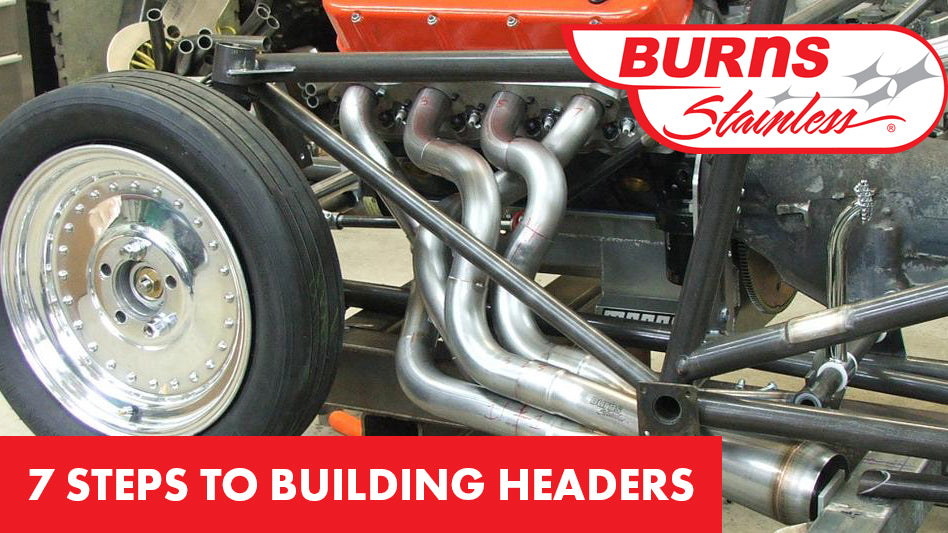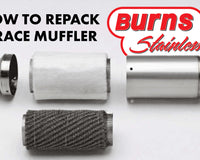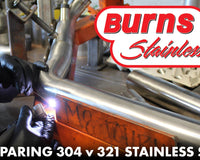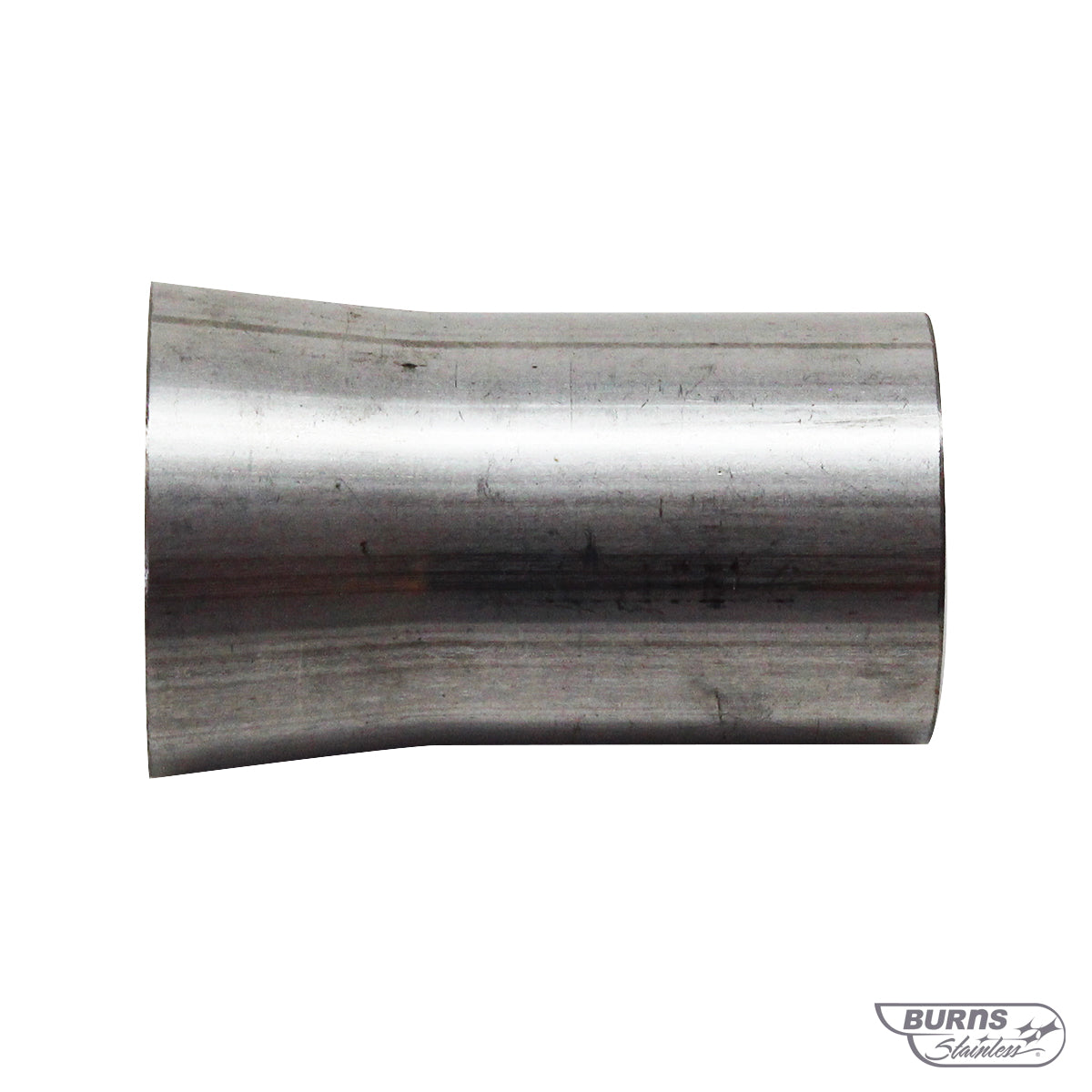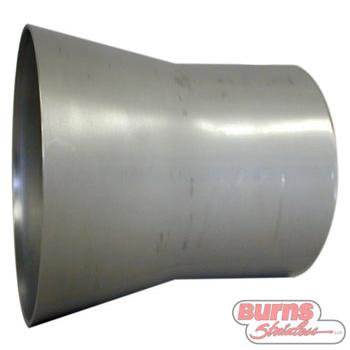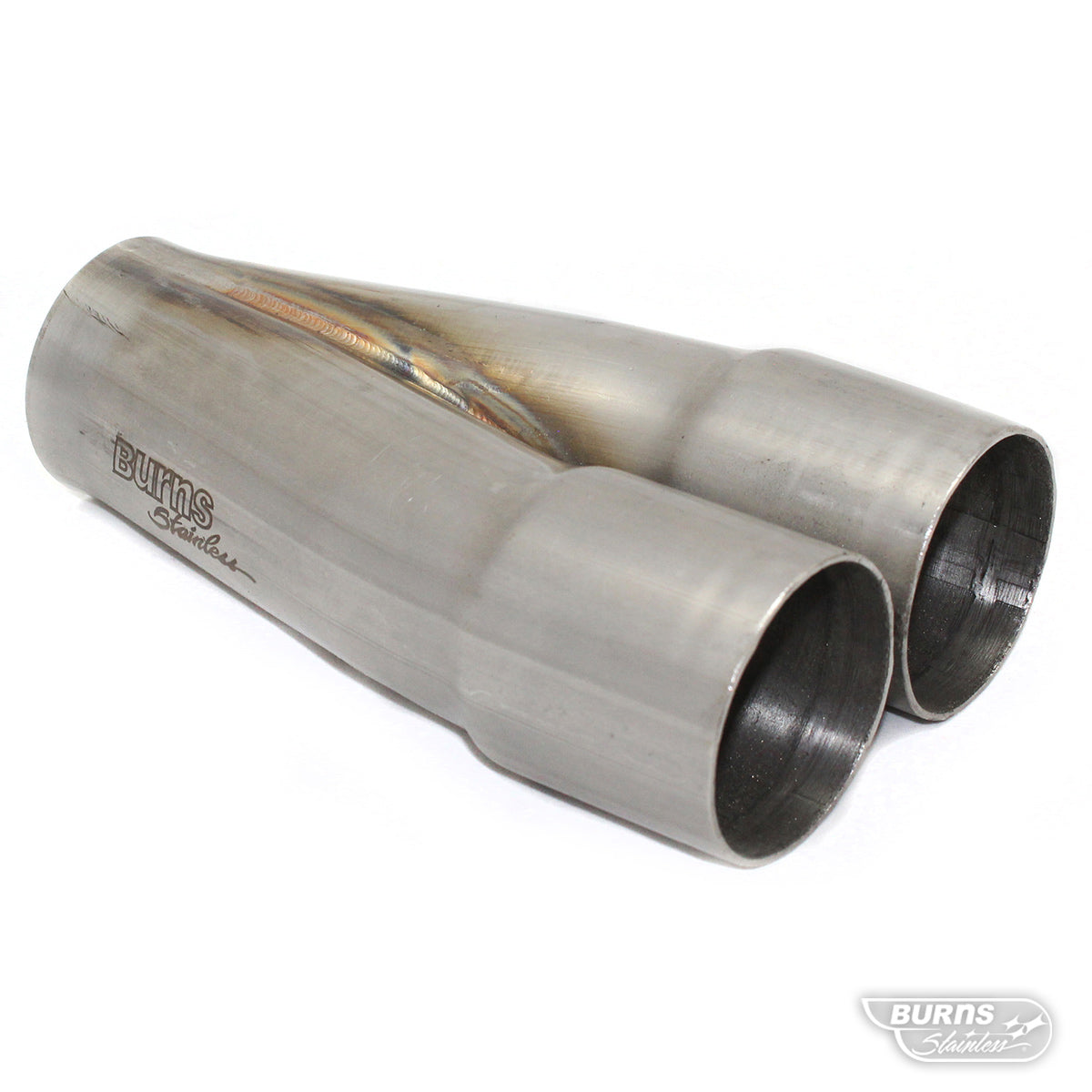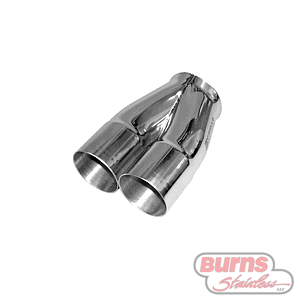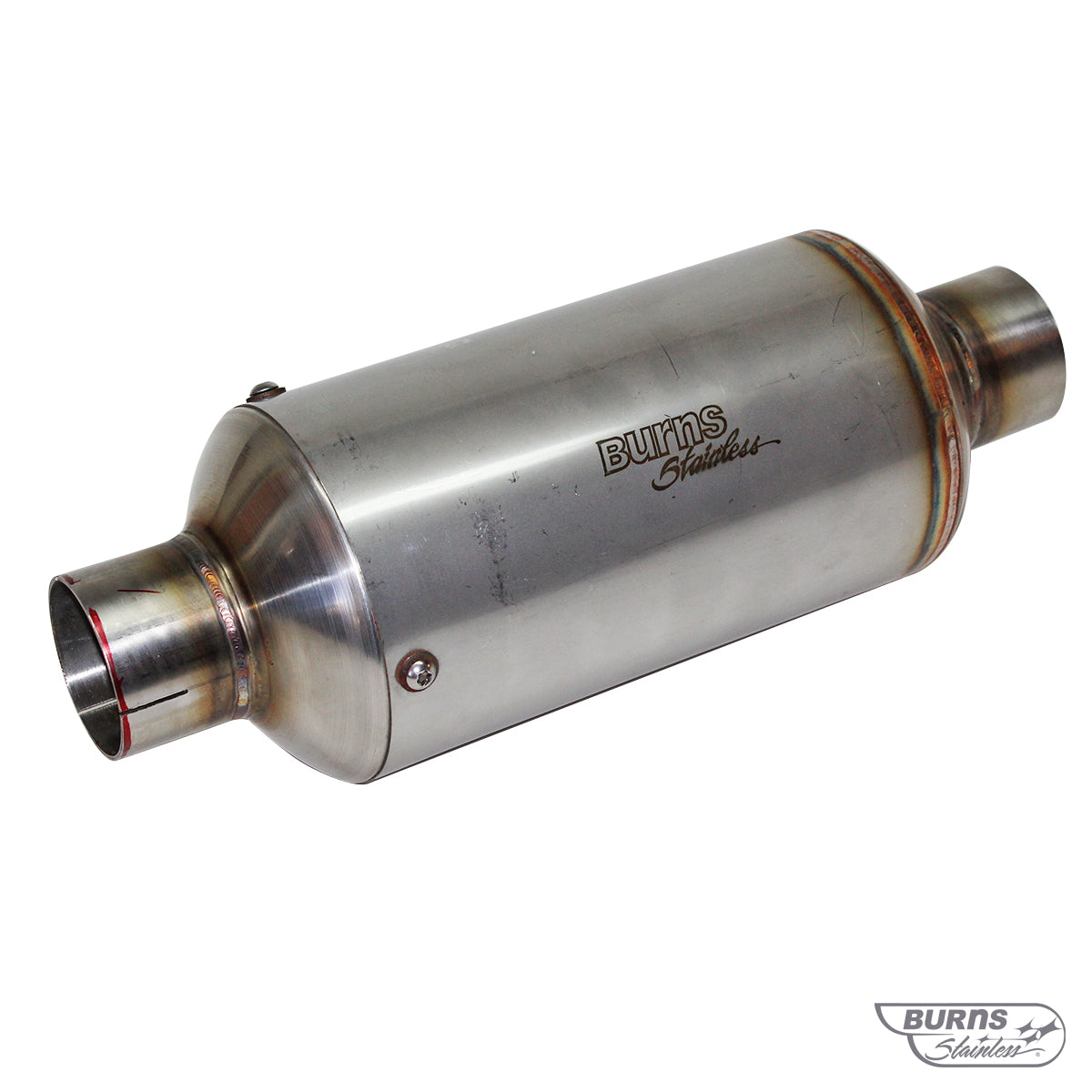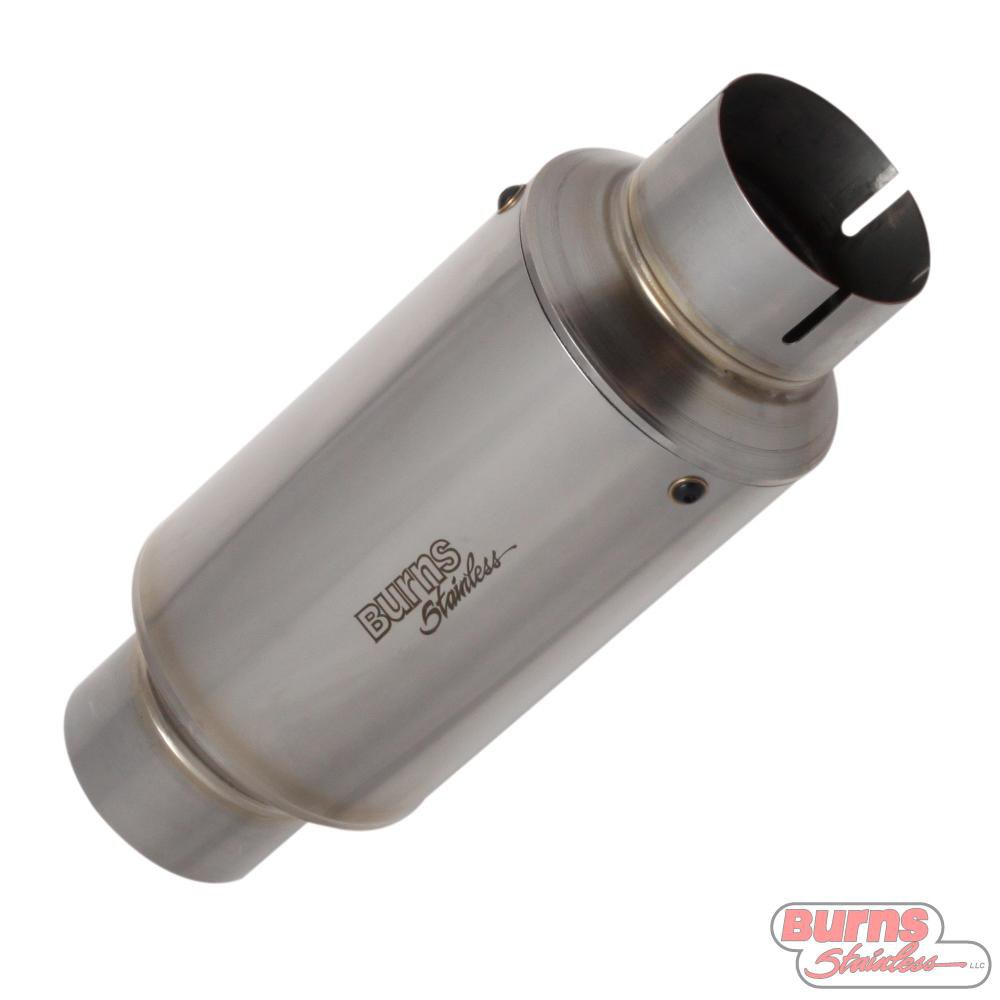
1. Know where you are and where you want to go.
“If you don’t know where you are going, how will you know when you get there?”

The first steps in an exhaust header project, as in all projects, is to establish your baseline and your objectives.
Basically, you need to answer the question, “Why do I want to build a new header?”
Are you looking for more power on top, are you looking for a broader power band, etc… Are you trying to reduce under-hood temperatures, lighten the car or improve the appearance?
Knowing where you start is very important, so document the current baseline performance of the engine. Current et and top high speed of the car, lap times, or better yet, dyno data are excellent measures of performance.
2. Properly engineer the header to "Ride the Wave".

After you have established your objectives, now it is time to properly engineer the header.
A properly tuned exhaust can actually help “supercharge” an engine by harnessing the wave action in the exhaust.
When the exhaust valve opens, the high pressure in the cylinder following combustion creates a pressure wave that travels down the exhaust primary tube.
When that wave hits the end of the pipe, or a collector, the wave is reflected as a vacuum wave that can actually pull spent exhaust gases out of the cylinder during the overlap period when both intake and exhaust valves are open, and helping the flow of intake charge into the cylinder.
This process is known as exhaust scavenging. The trick is to properly time the waves.
Burns Stainless has helps make this process easy.
X-Design is a proprietary software program that calculates the proper sizing of primary tubes, collector and tailpipe from basic engine design parameters.
Our customers can simply complete and submit a Race Engine Spec Form on our site with their engine specs and within a couple days, a representative of Burns Stainless will call or email an engineered exhaust design.
3. You need to choose the right material for the job.

We go over stainless steels for exhaust systems in our previous article. A few questions you need to ask yourself first though:
- What exhaust temperatures are expected?
- Is this a turbo application where high exhaust pressures are expected?
- Is weight an issue?
- How important is appearance and durability?
- Will it be subject to corrosive environments like salt water?
The most common materials used for headers is mild steel, 304 stainless steel, 321 stainless steel, Inconel, and some titanium (though we do not often recommend titanium.)
Mild steel is the least expensive material.
It works for many applications, but it is subject to corrosion. High-rpm engines with large overlap cams can even ingest rust particles from the inside of a header into the combustion chamber and score cylinder walls and rings – no bueno.
We recommend ceramic coating the inside and outside of headers when using mild steel.
Our 304 Stainless Steel Tubing is a workhorse material. It is affordable and has excellent properties. We recommend it over mild steel.
For higher temperature applications and turbos, use 321 Stainless steel tubing.
The most expensive option is Inconel 625. The high nickel content of this alloy gives it remarkable strength and very high temperatures. Also, the low thermal expansion coefficient of the material minimizes thermal stress.
What is there not to like – the price tag of course. Inconel is about 3 times the cost of 304SS, but for NASCAR Cup, World Rally and Formula One, it is the only choice.
Burns Stainless offers these alloys.
4. Map it out.

Next step is to layout and design the tube pack.
You can check out another article of ours on tips for header construction for further reading.
This is the most difficult step in the process for beginners and even seasoned header builders.
Building a set of equal length headers in the confines of a tight engine compartment with steering boxes, suspension struts and frame rails can sometimes feel impossible (and often is).
First thing to do is to identify the “pain points” of the engine bay.
- Are there heat sensitive electronics that must be taken into account?
- Is the steering box in the way?
- What fluid lines or wiring need to be taken into account?
- Can the header be R&R’d in one piece, or will there need to be single tubes?
- Is there sufficient ground clearance for the collector?
- Is it possible to route the tubes to help minimize thermal stress – especially important when using stainless steel?
Once these pain points have been identified, then you need to begin routing the tubes. A piece of vacuum cleaner hose can help you begin to formulate a game plan.
We suggest a plastic modelling block set from ICEngineworks to help layout the header tubes.
5. Don't skimp!
"The quality will remain long after the price is forgotten."- Henry Royce

Use high quality tubing materials and bends, its always easier to work with high quality bends then spending hours trying to make cheap ones work.
Read why ours are top tier here "Are Burns Bends Really Better?".
Burns Stainless uses only USA-sourced materials, usually Rath-Gibson 304L and 321L tubing with ASTM249/269 designations. This tubing is welded and bead reduced giving it great mechanical properties and has been fully annealed resulting in excellent forming and bending.
We offer both 304 stainless steel exhaust tubing and 321 stainless steel tubing.
This tubing retains it’s shape through the bend and has excellent weldability.
I speak with many customers that tell me they buy materials from several sources, but our bends are more precise dimensionally and is a pleasure to bend.
The extra cost of buying a quality bend from Burns is quickly offset by the labor saved by not having to straighten out tubes after cutting.
6. Fit, fit, and fit.
Proper fitment of the primary tube to the exhaust port is critical.
Check out our article on welding and fitting to get the full guide on it.
Why is fit important?
The exhaust gases are moving rapidly in this area, and flow obstructions can case significant power loss.
Dyno testing has shown that a poorly fit port/header interface can result in a 2%-5% loss of power.
We prefer to use CNC machined header flanges made from 304ss. Be careful when purchasing flanges as machinists will prefer to machine 303ss as it is easier to machine – but is not recommended for welding.
Burns Stainless has a variety of flanges for many different cylinder heads. Please call to get the correct fitment for your application. Burns also offers a wide variety of flanges and V-Band flanges to finish off your exhaust project
Precise fitting of joints is critical in header building, particularly when using stainless steel. If there are large gaps between tube fits, the tubes will ”walk” after finish welding requiring additional time to bang and shape so that they fit properly.
This is especially true with stainless steel.
Also, there are few things to admire more than a perfect TIG bead on a properly fit tubing joint that has been properly back purged and welded by a professional welder – or shall I say, artisan
7. #WELDPORN

And that brings us to proper welding techniques.
We always recommend TIG welding as it leaves a beautiful strong weld bead, though MIG welding is also acceptable – but frowned upon by header-snobs.
When welding stainless steel, it is important to back purge the weld with Argon.
This will prevent the formation of carbon precipitates that will weaken the weld.
It also helps control the temperature of the heat affected zone resulting in a properly golden-colored weld.
8. Refer to our guides and us.
Headers can be complicated, that's why we've got loads of information on them on our blog.
For your next project be sure to get started the right way and submit a Race Engine Spec Form.
Let us take care of the design and make it easy for you.

